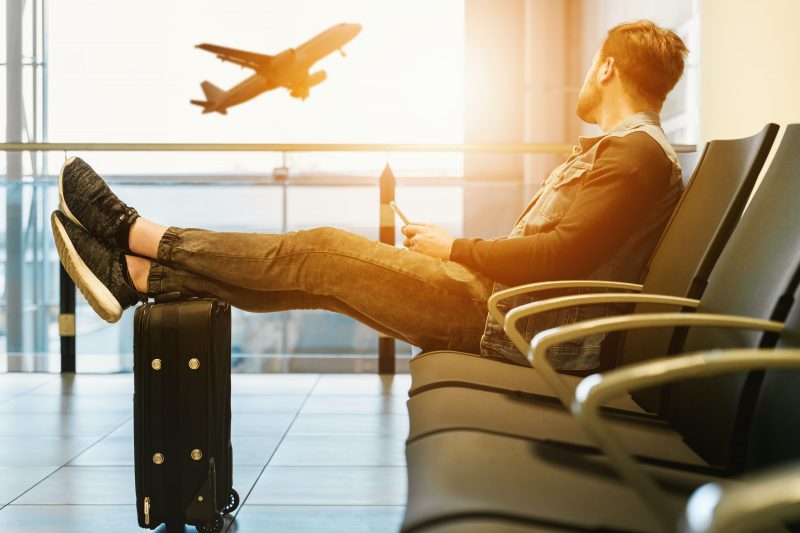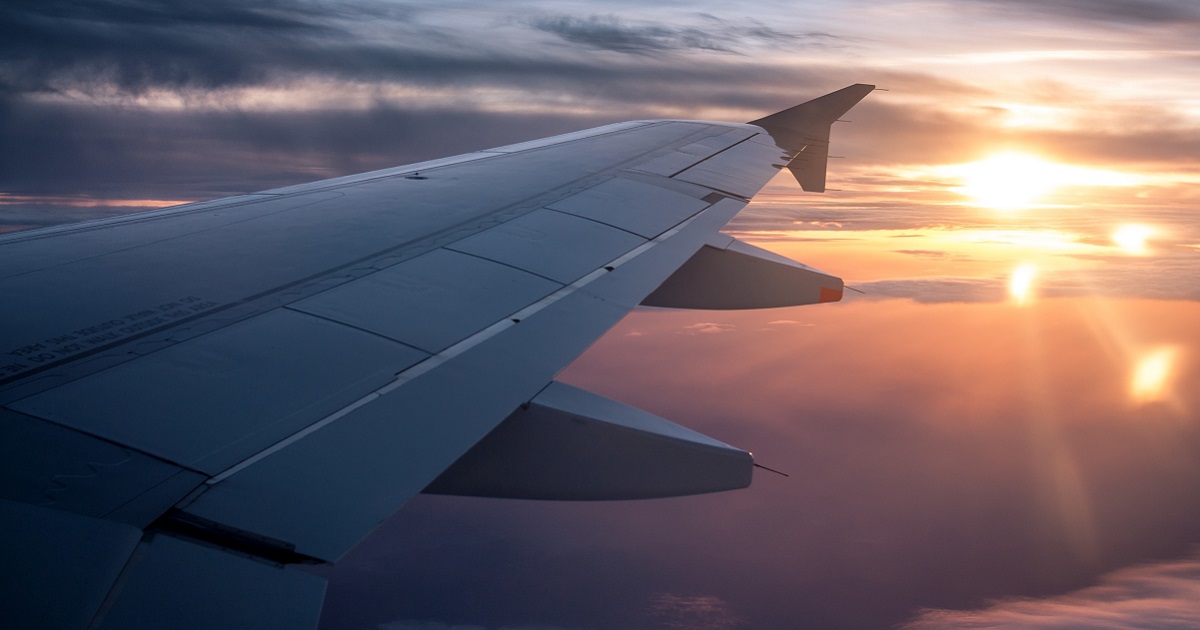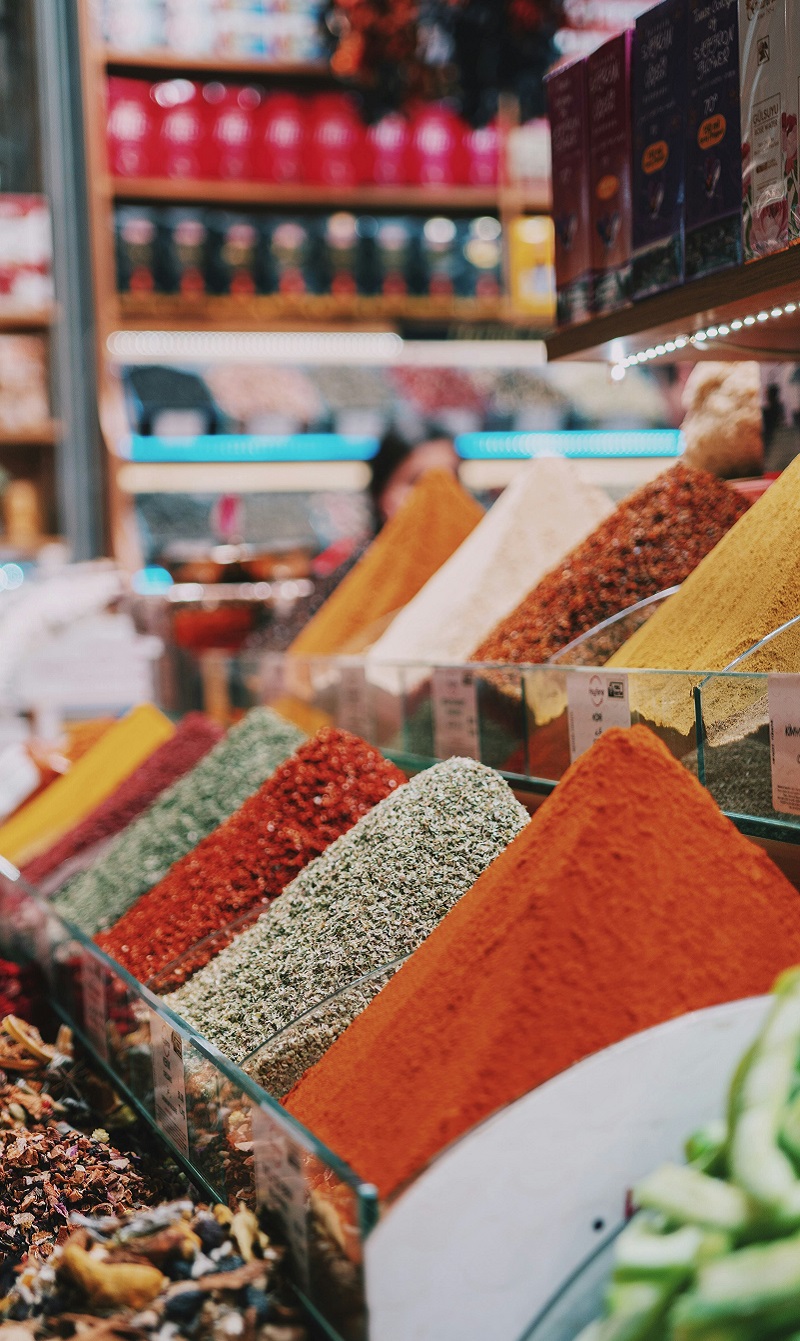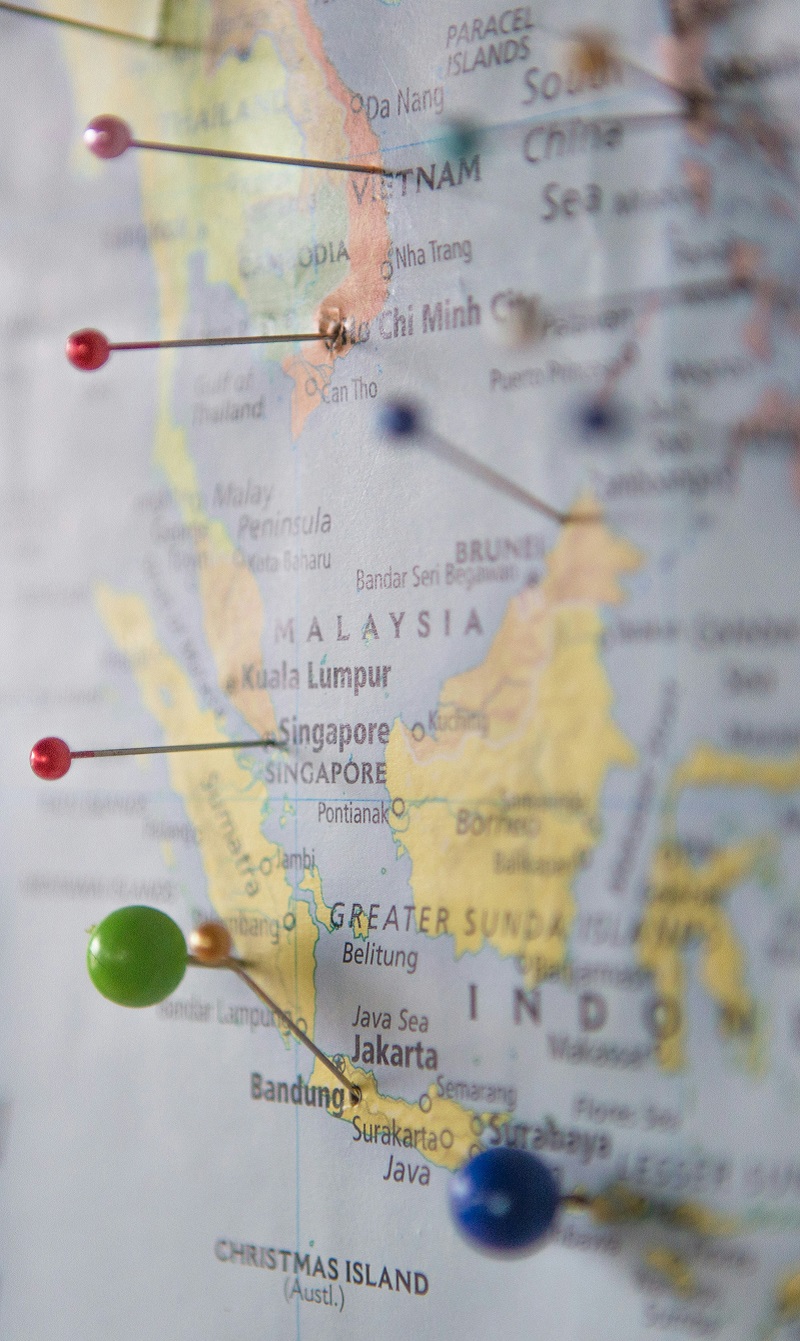Halal Tourism: Updates and Innovations
CEO and Founder of Tripfez Travel and Salam Standard, as well as speaker for WYN JumpStart programme in August 2022, talks about the direction in which tourism, and halal tourism, is going, mending the pandemic-impacted industry and innovations that shape it currently. Su Aziz writes.
Almost a decade ago, Faeez Fadhlillah founded Tripfez Travel which became the largest Muslim-focused online travel agency in the world. Then, five years ago, he went on to start an innovative, state-of-the-art travel portal, Salam Standard, that’s dedicated to the rise of global Muslim travellers, which was sold for an undisclosed amount. He also formed a family-run boutique investment firm with a USD100 million fund investing in outstanding entrepreneurs with disruptive ideas called Aleef Capital, plus a pharmacy chain in Malaysia called Downtown Pharmacy.
Needless to say, Faeez has been quite successful. In fact, many acknowledged this fact about him – he was one of ‘40 individuals who shaped Southeast Asian e-commerce’ by EcommerceIQ, 30 under 30 by Forbes in 2016, 40 Under 40 by Prestige and the Most Innovative Young Leaders Award 2016 by UCSI, to name a few. And he’s only in his 30’s.
Based in Kuala Lumpur, Faeez took a bit of time to answer some questions about the tourism industry before his speaking engagement with WYN JumpStart training programme in August 2022.

How has the current definition of traveling affected tourism?
Faeez: Tourism has been one of the industries that have been most negatively impacted by the COVID-19 pandemic. Many countries closed their borders in an attempt to mitigate the spread of the infections, effectively shutting off international tourism while even within countries, lockdowns have prevented people from moving too far from their doorsteps. Malaysia is not excluded from the trend with Malaysia experiencing a significant downturn in 2020 due to the continuous lockdown and closure of both domestic and international borders to curb the spread of COVID-19. The movement control order introduced throughout most of 2020 and in 2021 impacted the revenue of many travel companies.
Historically, tourism is a very resilient industry. There have always been sharp drops following past disease outbreaks such as SARS, H1N1 and MERS-CoV. But after about six to 12 months, we saw travel activities picking up again.
In stark contrast to ‘what goes up must come down’, things, fortunately, bounced back up in 2021 with total export revenues from tourism (including passenger transport receipts) rising by four per cent in real terms from 2020 to an estimated USD713 billion in 2021 (although still 61 per cent below 2019 levels). International tourism receipts also rose by four per cent in real terms to USD602 billion compared to 2020. Through that time, 18 million jobs were recovered, recording a 6.7 per cent increase compared to the uncertain times in 2020. Following a decrease of 84.6 per cent in 2020, international visitor spending also rose by 96.9 per cent in 2021.
Unlike the promising numbers seen in the global tourism revivals, the prolonged lockdown in Malaysia meant the country could only have its first taste of real tourism from 16 September 2021 onwards through the Langkawi travel bubble. The doors to tourism then flung open wider in October 2021 when the country’s vaccination rate among adults reached close to 90 per cent. The liberated atmosphere towards the last quarter of 2021, hence became the breakthrough that most Malaysians were yearning for as lockdown fatigue set in – even if the cosy surrounds of a home is more attractive than sterile offices.
As mentioned in UNWTO World Tourism Barometer, the recovering momentum of 182 per cent increase year-on-year from January to March 2022 was made more significant when a majority of the extra 76 million international arrivals were recorded in March alone – about 47 million in all, indicating the pent-up demand for travel throughout those two pandemic-stricken years. The same report when shares that Europe welcomed ‘almost four times as many international arrivals (+280 per cent) as in the first quarter of 2021, with results driven by strong intra-regional demand’ whereas, in the Americas, arrivals were more than double (+117 per cent). In the Middle East and Africa, growth in the same period was +132 per cent and +96 per cent respectively, while in Asia and the Pacific, the increase was 64 per cent over that of 2021.
By subregion, the Caribbean and Southern Mediterranean Europe continue to show the fastest rates of recovery. In both, arrivals recovered to nearly 75 per cent of 2019 levels, with some destinations reaching or exceeding pre-pandemic levels. The immensity of the growth must however be viewed empirically for a fair deduction, especially if we compare them to 2019’s data. So, despite the steep escalation in arrivals across the different geographical locations, they remained 61 per cent below 2019’s performance. This suggests a gradual recovery might be a more sensible forecast for the market, more so when travel restrictions were still enforced in different places around the world.
The Muslim travel market was no exception. The industry was heavily hit, with related industries being the worse hit. The halal food sector in particular, as halal restaurants had banked on millions of tourists, including those from Muslim countries suffered great losses during the two pandemic years. Taking a look into the umrah and hajj segments, the industry was drastically affected as the government closed the border, with related industries such as hotels, restaurants and retail, had to shut down and suffered a massive decline in revenue during the two years. According to the State of the Islamic Economy Report, Muslim spending on tourism increased from USD58 billion to USD102 billion in 2021. It’s expected to grow by 50 per cent in 2022 to USD154 billion and reach USD189 billion in 2025 at a four-year CAGR of 16.5 per cent.
What are the main challenges faced by the tourism industry globally?
Faeez: One of the biggest challenges facing not just the tourism industry, but most industries at large, is global supply and labour shortage. As more and more countries begin to loosen border restrictions, this ultimately puts enormous pressure on the overall supply chain across the entire end-to-end travel buying process. Many travel companies, ranging from large companies such as airlines to small operators, have gone bankrupt leaving a huge bottleneck pressure on the supply as the demand keeps on increasing exponentially.
Long-established travel businesses have gone bust and not been replaced. Many travel industry staff that were furloughed haven’t returned, taking many years of experience with them. The recent London Heathrow Armageddon showcases the main challenges of the industry. On average, London Heathrow handled nearly 220,000 passengers daily. With many ground staff put on leave due to COVID-19, London Heathrow is scrambling to increase their hire but lack of applicants causes major delays in flights and massive cancellations over the past few days. In fact, according to the airport itself, with the current staffing, they can handle a maximum of 100,000 passengers daily – almost half the capacity pre-COVID times with an average of 110,000 passengers ticket sold already for the upcoming summer.
Major components of travel have always been the airline industry and the hotel industry. The airline industry suffered tremendously due to the prolonged movement restriction order and border closures. This resulted in reduced schedules, fewer aircraft in the fleet and a lot less staff working for them. The increase in demand albeit lesser supply has resulted in a 20 per cent to 30 per cent increase in airfares globally which meant higher airfares as well as travel costs. The global hotel industry suffered great losses. Being a labour-intensive industry, hotels are struggling to replace lost staff and skilled workers since many were retrenched and have moved into other sectors during the borders closure. This caused customer service levels suffering and reduced offerings from hotels such as continental breakfasts, 24-hour room service, early closing hours of F&B and reduced laundry services to on-request for stays of more than one night.
The halal tourism industry represents between 10 per cent to 30 per cent of overall inbound tourism expenditure. It also suffered greatly due to the prolonged COVID-19 prevention measures. As a result, many hotels and halal tour operators closed down or pivoted from offering purely halal services to a mixture of halal and conventional tour services. In fact, in Malaysia alone, almost 70 per cent of ground and tour operators closed down or pivoted into other industries.
What would be possible solutions to these challenges?
Faeez: The issue of supply needs to be addressed holistically, using both top-bottom approach as well as bottom-top approach via a three-tier approach. Governments need to firstly address and standardise the cross-border requirements to pre-pandemic level, removing all forms of restrictions. This will remove massive bottleneck issues in terms of movement restrictions – ultimately enabling and encouraging a higher frequency of connectivity between two destinations. This also includes the removal of restrictions in all forms including the restriction on frequency of flights which resulted in fewer flights and ultimately higher flight prices. The requirements of PCR tests creates a delay at many airports worldwide and inconsistent standard operating procedures when entering a country cause lower confidence in traveling to that specific country.
The issue of labour shortage can only be addressed by governments by encouraging as well as incentifying higher education and training schools to promote tourism courses via direct financial injection, tax breaks and promotion of tourism courses as a career path. Don’t forget that in many countries, tourism is not only a major contributor to the GDP but also employment. In Malaysia, almost 24 per cent of jobs in 2019 were in tourism or related industries. In many countries, tourism also contributes to the influx of foreign currency as tourists spend, which results in national tax contribution.
Similar to the issue of labour shortages, governments can help tourism companies that have been suffering by direct capital injection, or low-interest loans that can enable small businesses to recover from the prolonged period of little to no business. These short-term measures can boost the industry in the long run.

How can halal tourism and hospitality help mend the badly impacted global tourism industry?
Faeez: According to International Air Transport Association (IATA) Passenger Data Report May 2022, total traffic then (measured in revenue passenger kilometres or RPKs) was up 83.1 per cent compared to the previous year, largely driven by the strong recovery in international traffic. Global traffic is now at 68.7 per cent of pre-crisis levels. If we were to analyse the global RPK, which signals the number of passengers, significant growth is contributed by countries that are predominantly Muslim. Middle Eastern airlines’ traffic rose 317.2 per cent in May 2022 compared to May the year before. May capacity rose 115.7 per cent versus the year-ago period and load factor climbed 37.1 percentage points to 76.8 per cent. Asia-Pacific airlines had a 453.3 per cent rise in May traffic compared to May 2021. This is significantly higher than the 295.3 per cent year-on-year gain registered in April 2022. Capacity rose 118.8 per cent and the load factor was up 43.6 percentage points to 72.1 per cent. Improvements in the region are being driven by reduced restrictions in most of the region’s markets, except China.
This is an important indicator for countries that are looking to promote tourism to focus on Muslim majority countries as the growth in the number of travellers constitutes a large portion of global travellers. This is primarily because, among the first countries to remove travel restrictions were those in the Middle East and South Asia. Thus, encouraging travellers within these countries to travel.
What are current innovations shaping the halal tourism industry?
Faeez: Muslims globally spent USD194 billion on travel in 2019, an increase of 2.7 per cent from USD189 Billion in 2018, which represents one of the largest growths and expected to continue post-COVID. With most predominantly Muslim majority countries being one of the earliest to remove all forms of movement restrictions, it’s expected to be a major driver in tourism throughout 2022 and 2023. Current innovations include an end-to-end halal travel provider as well as halal online travel agencies (OTAs), which are mushrooming as the demand for halal tourism skyrocketed post-COVID. Companies such as Tripfez Travel and Salam Standard continue to be major providers of halal tourism.
Peer-to-peer platforms are providing solutions for Muslims searching for halal accommodation. It differentiates itself from Airbnb by guaranteeing halal-certified services such as halal food and designated prayer rooms. Smartphone apps are being developed – Tourism Authority of Thailand launched an app that helps Muslim travellers find halal products and services. It provides information about prayer times, food options and sightseeing tours. Technology will continue to shape the growth of the sector by allowing hoteliers, restaurateurs and others to demonstrate that they are sensitive to halal requirements. Innovation by halal tech firms appears to have established a first-mover advantage.
How should the halal tourism and hospitality industries innovate for sustainable growth and keep its momentum up?
Faeez: Innovation is essential to support sustainable growth and big companies are starting to look into ways to target Generation Alpha (Gen Alpha) – they’ll be the first generation to be born in the twenty-first century and are natural users of technology such as smartphones as well as tablets. They were born with smart devices and can’t imagine life without them. The unique characteristics of Gen Alpha will influence travel behaviours of families and future travel revenue. Places with largest growth of Gen Alpha are predominantly Muslim countries. Thus, it’s these regions that will shape the future of travel. Halal technology companies must prepare to address the needs of Gen Alpha and tech usage will not only increase the reach, but also solve and address needs of future Muslim travellers.
How has technology contributed to your businesses’ success as well as longevity?
Faeez: Technology has been a major contributor to Tripfez’s consolidation of backend processes and optimisation as borders open and travel ramps up. This is important to scale up fast and efficiently with minimal resources. Also, thanks to technology, Tripfez was able to increase its reach which contributes to higher revenue in a short period.
With Tripfez Travel being an online travel platform, what are your next steps to innovate it further?
Faeez: Tripfez will continue to focus on scaling up with optimising the usage of human resources to ensure an optimised back-end process resulting in higher revenue per dollar spent both in terms of marketing as well as human resources.
Lastly, how can technology ensure a resilient tourism industry during a prolonged challenging economic period?
Faeez: Technology plays a vital role to ensure a resilient tourism industry during a prolonged challenging economic period due to both the optimisation of processes and efficiencies as well as the increase in reach with minimal resources and marketing spent.
Read about another WYN JumpStart speaker, Dr Vibin Joseph.
Main photo by Patrick Rosenkranz on Unsplash.





